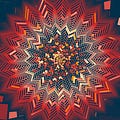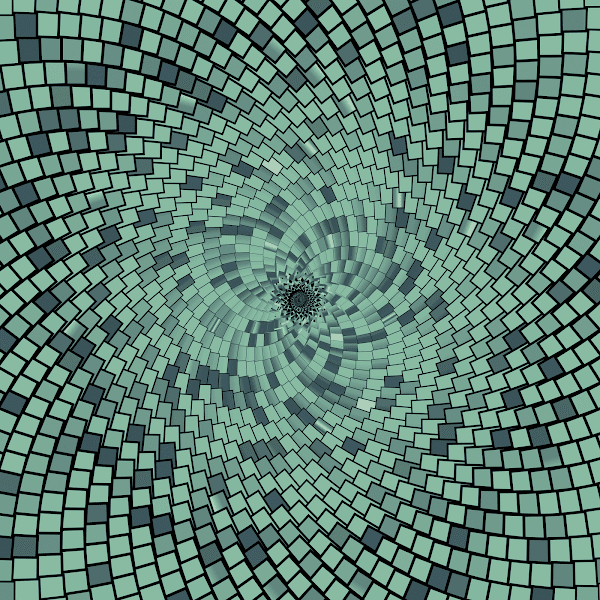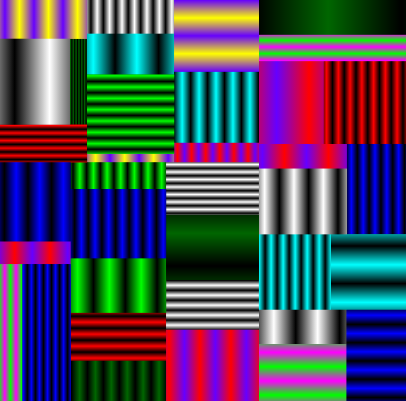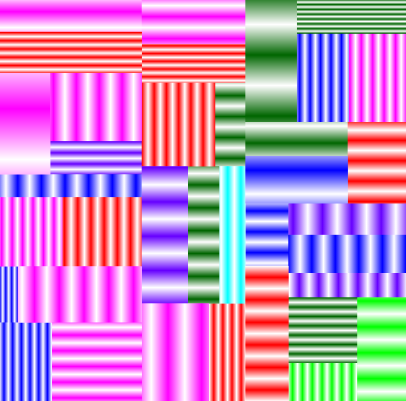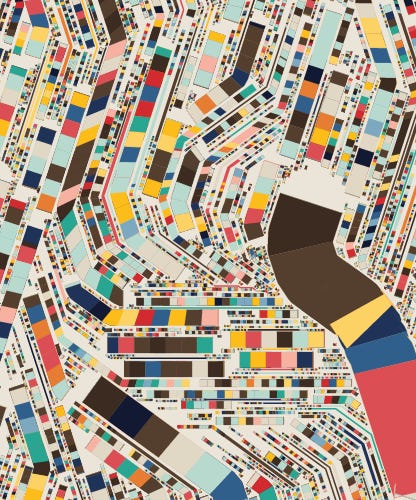Floor is Rising - Generative Art Part 1
Primer: In this article, we share 3 pod summaries from the podcast Floor is Rising, where the host Sabretooth and Kizu talk about the prominent generative artists that they found interesting. This is part 1 of a two-part series where we combine the podcasts episodes so that readers can better appreciate the nuances of what we know as generative art.
Shvembldr
Short intro
Latvian artist
His journey resembles English Premier League teams
Started off in Hic Et Nunc (HEN) platform, selling his works for $20 to $30 per piece
Now his works are selling above $20k
Very prolific and the quality of his works was so high that he was discovered and invited by Art Blocks to do a drop on their platform
Proceeded to do other projects in the Ethereum ecosystem
Progression in career
Interesting because this is a good example of an artist who started off on a smaller platform and graduated to a bigger platform
Sees a parallel in the traditional art world as well
Some of the Western galleries have more clout than others
An artist starts out in a smaller gallery, moves on to a medium one and as he gains even more recognition, he eventually moves to a 'blue chip' gallery
Also, this is a matter of the characteristics of each platform and the projects/artists associated with it
Good to see differentiation in terms of not just the technical specifications of the platform but also the public perception of it
Good for the crypto NFT art scene
Structure of his art
Generative art is based on an algorithm encoded in a smart contract
A collector buys a specific instantiation based on the algorithm
But his earlier works in HEN platform, he is selling the algorithm itself which is embedded in the NFT
This means you can click to generate as many works as you want, not just any specific print
Goes back to the question of what exactly you are buying with an NFT
Giving the option to generate the instantiation that you like best demonstrates the structure of the work
The collector will appreciate the artwork better because he is implicated in the final stage of the artwork
Something similar to commissioning a portrait
You talk with the artist, give him your requirements and the parameters you want to be fulfilled, and the artist has a style that you obviously like
The outcome of the work will be a combination of your parameters and the artist's parameters
The market today is saying that it prefers the sale of specific instantiations rather than the algorithm
This is because the art is a very small component of what people are buying
What they are buying is a relationship between the collectors
Generative art is a bridge between two huge NFT markets - fine art and collectibles
The most defining characteristic of collectibles is this loot-box mechanic where you don't actually know what you are going to get, or what is the rarity of the things you got
Fine art does not provide that thrill but generative art does
Kizu thinks that the loot box mechanic is just one aspect of why people collect artwork by a certain artist
An example is the artworks during Picasso's blue period which are more valuable and coveted, but his ceramics are not worth much
However, there are still people who collect everything to complete their set
Tyler Hobbs wrote in The Rise of Long-Form Generative Art article that he is always quite careful to build in a consistent minimum output quality
He will play around with the algorithm until he reaches a point where even a rare bad piece is still acceptable
Rafaël Rozendaal
Short intro
Dutch artist
Kizu was a fan of his earlier work before he began making NFT
In the early 2000s, he was considered a pioneer of what was known as net or internet art
He would buy a domain name, set it up with simple animations, often black and white, and sell it off to collectors
The collector will agree to sign a contract to say that they will continue to make the site publicly accessible, which fits the ethos of a website
Examples of internet websites
He was for making artworks accessible to everyone with an internet connection and a browser
Rafaël often will say that he was a bit suspicious of any technology that tried to impose proprietary rights on what he saw was free public internet culture
His OG status in the internet art fits very nicely with his entry into NFT
The blockchain/NFT space promises the kind of freedom of information, sort of a cypherpunk culture, that is the zeitgeist of the early internet days
This early promise of the internet goes unfulfilled as the rise of digital giants ended up making the internet like a gatekeeper fiefdom of sorts
Dutch auction mechanism
Rafaël is the first artist of the Art Blocks curated collection that was featured using a Dutch auction mechanism
Art Blocks had been using a fixed price auction since inception, usually at 0.1 ETH
Usually results in a gas war between all the collectors who want to collect it before it sells out
Due to the popularity of the platform, they had decided to switch to a Dutch auction, where the price begins high at 3 ETH and start dropping each block until people are willing to buy it
Rafaël is the first drop featured using this mechanic - price drop from 3 ETH all the way to 0.25 ETH
Art style
The latest drop is the Endless Nameless collection
Sabretooth feels that the art style is not the archetypal look or aesthetic that will attract collectors
Kizu likes the minimalist style of his work, back in the days of his simple animation in his internet art
Less of the pure visual variety that people are used to seeing in generative art in 2021
Tyler Hobbs
Short intro
One of the hottest generative artists today
Recently produced the drop on Art Blocks, Fidenza, which is setting records in terms of secondary sales
The lowest secondary sale is around 29 ETH, about $100k USD
Art style
The Fidenza collection has the quintessential aesthetics that generative art collectors appreciate
A lot of visual variety in terms of the patterns and the construction that it is hard to encapsulate what he does
Tyler represents the school of generative art that believes in the infinite potential of the generative algorithm to transcend what we have come to know as an artistic style
Usually, artists are known for a signature style, even though throughout their career they may change it
Very rarely do an artist comes to prominence with as many styles as Tyler has been showing us
Kizu wonders if we have reached a stage where an artist's signature style is actually all these varied styles instead of one single dominant style
Sabretooth thinks that it is possible that in this new generative art space now, a style is defined more by the methodology and the algorithm of the works, rather than the more traditionally visual way of differentiating the difference in styles
Kizu agrees - there is a kind of paradox that even though the same algorithm is used, because of the element of uncertainty and randomness, the output can look visually different
Price premium to artists' works
There are all kinds of premiums:
English speaking premium
Cultural premium
Known premium (known and named artists can sell higher than anon or pseudonymous artists)
Racial premium
All the prejudices and biases of the real world still exist in the crypto world
There is a bias towards US-based projects because of the English speaking premium and cultural premium
When people buying NFTs, they are seeking a way to connect with the artist
If an artist can communicate well in English, using all the cultural forms of signalling, then NFT buyers will pay a premium for that
There is a lot of communication between the collectors and the artist
Platforms can help to foster a community and build a following, compared to the traditional art world where there are many middlemen involved
In the traditional art world, you evaluate artists based on how you think their style will age as their career progresses
However, in the crypto world where English is the lingua franca, it's an easier form of arbitrage to select artists that are visually on par with someone who is selling much higher but is currently suffering from a lack of ability to communicate in English
Here, you bank on the fact that the artists will improve over time and raise their social media and mimetic value
Links
Podcast on Shvembldr - Ep 12: https://www.floorisrising.com/episode/shvembldr
Podcast on Rafaël Rozendaal - Ep 13: https://www.floorisrising.com/episode/rafael
Podcast on Tyler Hobbs - Ep 14: https://www.floorisrising.com/episode/fidenza
All information presented above is for educational purposes only and should not be taken as investment advice. Summaries are prepared by The Reading Ape. While reasonable efforts are made to provide accurate content, any errors in interpreting and summarizing the source material are ours alone. We disclaim any liability associated with the use of our content.

